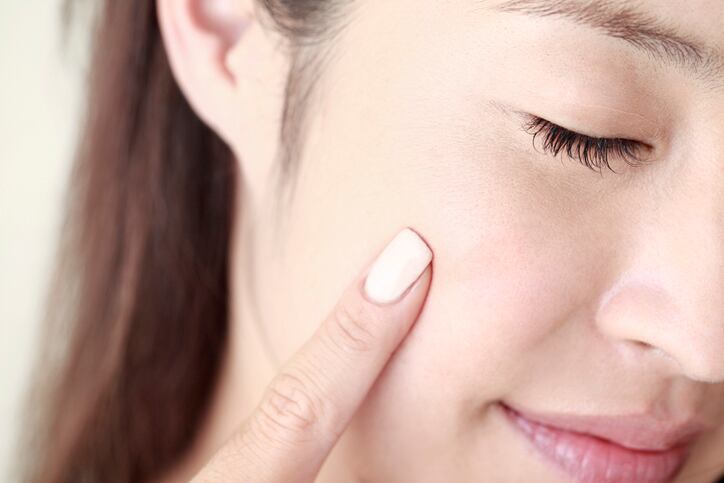Writing in a dedicated book chapter for Ascorbic Acid – Biochemistry and Functions [working title], MD Enrique Lorente Prieto conducted a literature review to analyse use of vitamin C in topical cosmetics. The work looked at scientific evidence for efficacy and absorption and identified new areas of opportunity for use of the compound in topical cosmetics.
According to the review, topical use of vitamin C in cosmetics aroused “much interest” in medicine and cosmetic dermatology, with the role of ascorbic acid (vitamin C) “well known” in skin health. So, as topical use in cosmetics continued to fast-evolve, generating “significant amounts of money day after day”, the review delved into the science, considered whether it could be a “universal” ingredient and looked at future areas to target with innovation.
Vitamin C and skin
Review author Prieto said there were “numerous studies” supporting and justifying the topical cosmetic use of vitamin C, including its ability to eliminate ROS [reactive oxygen species]; to stimulate collagen synthesis directly by activation of messenger ribonucleic acid (mRNA); and to preserve collagen in the skin by regulating enzymes responsible for its degradation.
Opting for topical application versus oral supplementation to increase levels of vitamin C in the skin, he said, was the “more effective” route because the latter was limited by intestinal transport mechanisms.
Considering specific actions on the skin when used as a topical, he said Vitamin C could be categorised as an active for:
. Antioxidant against photodamage caused by UV rays
Vitamin C was able to neutralise free radicals present in the aqueous compartment of the cell, by a process of “donation and transfer of electrons”, he said. It was also an “essential cofactor” in several enzymatic reactions.
The compound inhibited the action of protein transcription factor-1 (aP1), acting as a regulator of MMPs [multifunctional proteases] and therefore decreasing the damage these MMPs produced to collagen fibres. It also reduced inflammation and immunosuppression induced by UV rays by preventing the reduction of an antigen-presenting molecule Cd1a.
When added to sunscreen formulations, Prieto said vitamin C enhanced “efficiency and protection against UV damage”.
. Depigmenting
He said vitamin C also inhibited the synthesis of melanin in the skin, thus reducing melanin formation, by binding to Copper (Cu) ions present in the melanogenesis pathway, therefore inhibiting the action of the tyrosinase enzyme which was copper dependant.
Unlike other active ingredients with depigmenting action, Prieto said vitamin C was not cytotoxic against melanocytes and when compared to hydroquinone, the compound remained similarly efficacious but with less skin irritation.
. Anti-ageing
One of the important roles vitamin C had in the body was to help maintain the collagen network, regulated via several mechanisms, he said.
Firstly, it prevented autoinactivation of lysyl and prolil hydroxylase enzymes – key to the process of collagen synthesis. Secondly, it directly activated the transcription of the factors involved in collagen synthesis and stabilised messenger RNA (mRNA), which regulated the synthesis of type I and type III collagens. And thirdly, vitamin C increased the activity of the collagen expression gene by increasing the synthesis of the tissue inhibitor of MMP-1 and consequently decreased collagen degradation.
. Regenerator of oxidised vitamin E
Vitamin C also neutralised reactive oxygen species (ROS) being generated continuously in the body alongside a host of other non-enzymatic scavengers, including vitamin E. The latter was a fat-soluble antioxidant designed to protect cell membranes from oxidative stress but could often become depleted after sun exposure.
Both vitamin C and vitamin E had an antioxidant effect on the skin, interacting with each other in such a way that vitamin C regenerated oxidised vitamin E which ultimately favoured the “maintenance of the skin’s antioxidant reservoir”.
Future developments for topical vitamin C
Ongoing studies were now looking to expand uses of vitamin C in the skin, Prieto said, including help with hair loss, healing wounds and scars, targeting skin ageing linked to smoking, and tackling stretch marks.
Current research was also sharply focused on improving the stability and penetration of vitamin C in topical formulas, he said.
“The cosmetic industry is still faced with the challenge of developing a more stable formulation and finding a method of transepidermal administration that increases the concentration of vitamin C in the skin, and, therefore, its effectiveness and results,” Prieto wrote – two areas that had been long-standing challenges for topical vitamin C innovation.
Over the years, a plethora of strategies had been tested over the years, he said. For example, work was happening around encapsulation, formulation at low pH, oxygen-tight packaging, and the addition of other electrolytes and other antioxidants for improved stability. Optimal pH during preparation had also been identified as important for good penetration through the epidermis, ideally less than 3.5. Optimal concentrations for topical applications had also been worked out at between 8-20% because higher concentrations proved irritating and did not offer an increase in activity.
“It is necessary to find more stable chemical forms with greater skin penetration, and technology to increase its passage through the epidermis,” he said.
On the absorption side, newer studies indicated potential for ultrasound, iontophoresis, fractional lasers, and microdermabrasion in favouring skin penetration of the vitamin, though Prieto said more research was needed in these fields, particularly studies with larger samples to evaluate efficacy of these routes versus standard topical applications.
Moving forward, though, he said it would also be critical to keep in mind some of the potential side effects associated with topical application of vitamin C, including contact dermatitis.
Source: Ascorbic Acid – Biochemistry and Functions [working title]
Published: January 2023, online ahead of print, doi: 10.5772/intechopen.109644
Title: “Cosmetic topical use of vitamin C”
Author: M.D. Enrique Lorente Prieto




